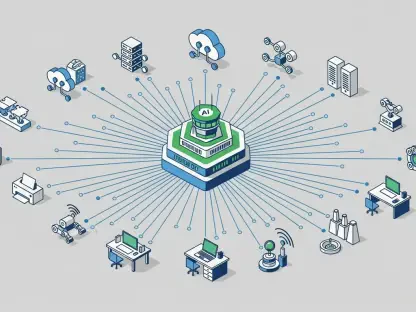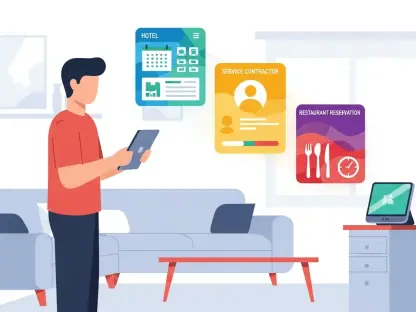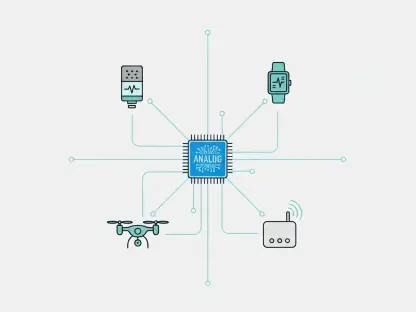Laurent Giraid is celebrated for his contributions to Artificial Intelligence, with a specific focus on machine learning, natural language processing, and the ethical dimensions of AI technology. In this interview, Laurent explores how Duolingo’s strategic shift towards an AI-first model affects operational dynamics, employee roles, and the overall mission of delivering language education globally. He elaborates on the transition of tasks and roles affected by automation, the company’s measures to maintain employee well-being, and the broader tech industry’s shift to prioritize AI.
Could you explain the reasoning behind Duolingo’s shift to an AI-first model?
Duolingo’s decision to adopt an AI-first approach stems from the necessity to produce content faster and manage resources more efficiently. By relying heavily on AI, Duolingo can automate lengthy processes, allowing human efforts to focus on more complex and creative tasks, which is key to advancing their mission of delivering scalable global language instruction.
What specific roles or tasks will AI take over from contractors?
AI will primarily handle tasks that are repetitive and rule-based, such as content generation, user interaction assessments, and initial tutoring interactions. These are tasks where AI can perform efficiently, freeing up resources that contractors previously managed, enabling them to focus on more intricate parts of the educational experience.
How will Duolingo assess employee performance and job candidates in terms of their use of AI tools?
Duolingo plans to evaluate employees and potential hires based on their adaptability and proficiency with AI tools. This approach encourages the workforce to develop skills that integrate AI seamlessly into their workflows, ensuring that the organization remains ahead in utilizing technology to enhance productivity and creativity.
What are some examples of tasks that AI can automate at Duolingo?
Tasks such as content personalization, automated feedback, initial content drafting, and data analysis can be effectively automated by AI. These functions streamline operations and enhance the learning experience by providing customized content suited to individual users’ needs.
How does integrating AI facilitate faster content production?
AI allows Duolingo to create and curate educational materials at a scale and speed previously unattainable. By automating the production of language learning content, Duolingo can rapidly expand its offerings and continuously update its courses to reflect current linguistic trends and educational practices.
Could you share more about the AI-powered video call feature and its intended benefits?
The AI-powered video call feature is designed to simulate the experience of receiving instruction from a human tutor. This innovative tool can provide immediate, personalized feedback and facilitate practice conversations, significantly enhancing the interactive element of language learning and making quality education more accessible globally.
What are the constructive constraints, and how do they impact the way teams operate at Duolingo?
Constructive constraints push teams to consider automation as the primary solution before expending additional resources. These constraints encourage a culture of innovation and efficiency, prompting teams to optimize their processes and integrate AI to solve problems rather than relying on traditional methods.
With Duolingo’s AI-driven changes, how do you ensure continued employee well-being and support?
Duolingo supports employee well-being by prioritizing training and mentorship programs that help staff adapt to new AI-centric workflows. It’s essential to center employee growth and security in the transition to assure they feel supported and equipped to thrive in the evolving technological landscape.
In what ways does AI help Duolingo’s mission to deliver language instruction globally?
AI enables Duolingo to offer personalized learning experiences that cater to a diverse user base worldwide. By scaling content and optimizing interactions, AI supports the company’s mission by making language learning more efficient, engaging, and reachable for millions around the globe.
How did Duolingo’s early investment in mobile-first design impact its success, and how similar is that to the AI-first approach?
Duolingo’s early mobile-first strategy allowed it to capture a broad audience by prioritizing accessibility and ease of use. The AI-first approach mirrors this by anticipating future technological trends and positioning the company at the forefront of education technology, ensuring prolonged relevance and innovation.
What areas or systems at Duolingo are not yet ready for full automation, and why?
Certain complex analytical processes and unique content generation tasks require nuanced human input. These elements need more advanced AI capabilities or creative decision-making, illustrating areas where human judgment is vital and full automation remains a future goal.
How does Duolingo plan to handle setbacks that may occur during the AI integration process?
Duolingo’s strategy for handling AI implementation setbacks involves maintaining flexibility in its developmental timeline and investing in employee training. The organization recognizes the importance of learning from missteps to refine processes continuously and adapt protocols efficiently as AI tools mature.
What challenges do you foresee as Duolingo transitions to an AI-first model?
The primary challenges include ensuring that AI integration does not reduce the quality of instruction and maintaining user engagement in a rapidly changing environment. Balancing technology enhancements with human elements to preserve the educational experience’s integrity is crucial.
Can you share any insights on the broader trend among tech companies to prioritize AI use before adding more staff?
The shift reflects a growing recognition of AI’s potential to maximize efficiency and streamline operations. By embedding AI into workflows, tech companies can pivot resources towards innovation and strategic growth initiatives rather than merely expanding headcount, leading to more sustainable development.
How will Duolingo communicate progress and updates regarding this AI transition to its employees and users?
Duolingo plans to maintain transparency through regular updates and open channels of communication with both employees and users. This approach ensures that stakeholders remain informed and engaged with the company’s evolving vision and efforts to enhance learning experiences through AI.
Do you have any advice for our readers?
Embrace lifelong learning and adaptability in an age driven by technological advancement. Whether you’re a professional navigating AI tools or a student using them, being proactive about acquiring new skills and knowledge will position you favorably in an increasingly AI-integrated world.









